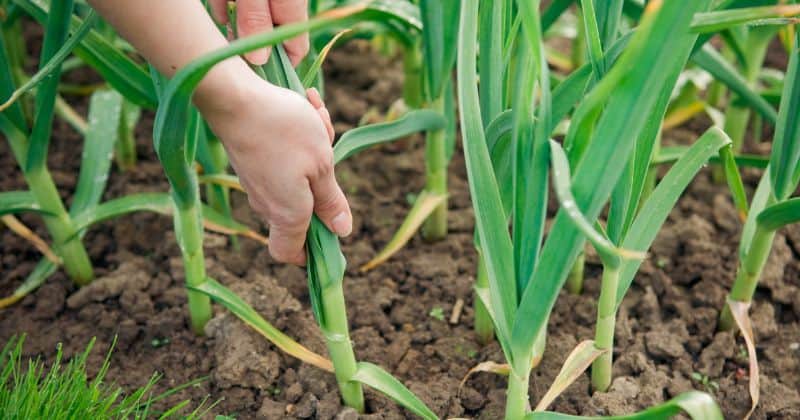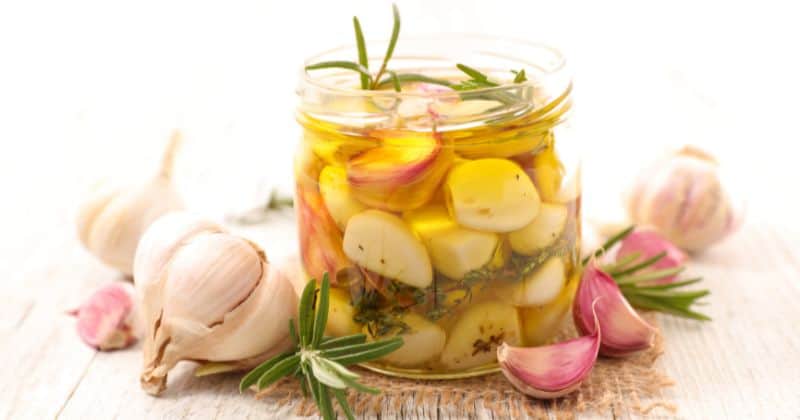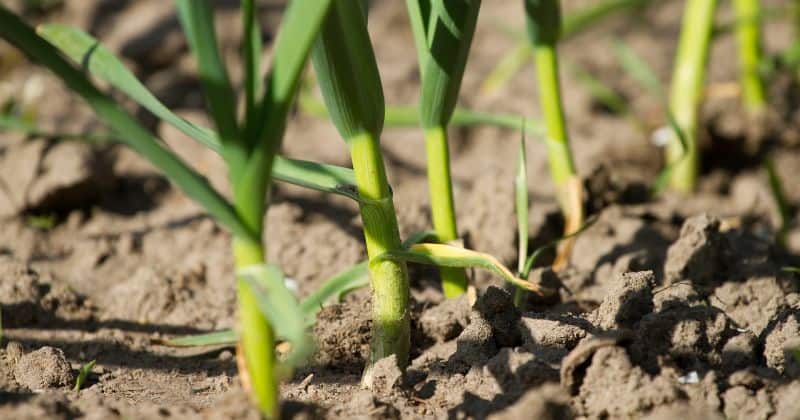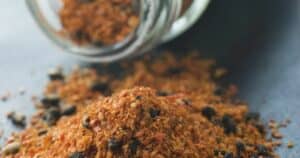Since garlic grows below ground, telling when to pick garlic is challenging. Don’t worry; I will help you become a pro at harvesting garlic.
Garlic is a beloved kitchen ingredient because it intensifies the flavor of many dishes. Besides the fantastic aroma and pungent taste, consuming garlic offers many health benefits. Also, cultivating garlic is easy. However, you may wonder when to pick garlic.
Generally, I harvest garlic when its lower leaves start to brown. If the cloves fill out the skin, it’s harvest time! To be sure, I dig up a few bulbs.
When is the Best Time to Harvest Garlic?

I used to purchase garlic from time to time. However, after I decided to cultivate my own, I saved a lot of time and money from going to a grocery store.
As underground bulbs, determining the best time to pick garlic can be confusing. Fortunately, you do not need an x-ray to tell when your garlic has reached the perfect plump maturity stage.
Garlic will take anywhere from 6 to 8 weeks to mature. Harvesting usually occurs from late spring to mid-summer months. Garlic is ready for harvesting once its lower leaves turn brown. Yes, it is all in the leaves.
Do you want to be sure? I recommend digging up a few bulbs. If the cloves seem to fill out the skins, picking the garlic is a good sign.
I once harvested my garlic too soon, and I got smaller cloves. Plus, they do not store well.
On the other hand, leaving the bulbs too long in the ground is also not ideal. The cloves tend to burst out of their skins. As a result, they become susceptible to shorter storage time or disease.
In short, time is everything when picking and storing garlic.
When Does Garlic Mature?
Garlic comes in different varieties, and each type has a certain maturity period.
For example, Silverskins mature in July or August, while Turban and Asiatic varieties mature as early as May.
There can be a 6 to 8-week span between the earliest garlic and the latest-maturing garlic to be harvested. I observed that small plants usually mature more quickly than larger plants.
Last year I planted Siciliano and Ajo Rojo in October. I picked these two garlic varieties around 2 weeks apart in late May and early June.
In areas with southern climates, harvest time depends on the planting dates. As with the northern climates, harvesting garlic usually happens from late July to August.
Below are the garlic varieties with their maturity period:
- Asiatic and Turban – May to June
- Creole, Rocambole, and Artichoke – June to July
- Marbled Purple Stripe and Glazed Purple Stripe – July
- Silverskin and Porcelain – July to August
The soil conditions and current weather also determine the harvest period. This means even if I grow the garlic variety in a particular season, they are less likely to mature at a similar rate as last season.
Overall, observing the leaves in spring is the best way to know when to pick a clove of garlic.
How to Read the Garlic Leave?
You do not need to get a crystal ball to read the leaves. Yes, we will now focus on the leaf reading.
Generally, you have to observe the garlic leaves die off, where they turn yellow and then light brown.
Meanwhile, you also need to consider the variety. Hardnecks include the Turban, Rocambole, Purple Stripe, Porcelain, Marble Purple Stripe, Glazed Purple Stripe, Creole, and Asiatic types. Softnecks include Silverskin and Artichoke.
For hardnecks, you must wait 3 to 4 weeks after removing scapes. They will have a half and half or 2/3 to 1/3 brown-to-green leaf ratio.
Each leaf acts as a layer for the papery tunic, wrapping around the bulb. However, allowing more than 2/3 of the leaves to turn yellow and brown is not recommended. Intact and well-developed tunics retain fragrance and flavor. They also provide an effective defense against diseases and pests, improve the storage capacity of the bulbs with increased shelf life, and retain moisture.
On the other hand, the papery layer dies once the leaves turn brown and die. When all leaves die, the tunic turns patchy and thin. This makes cloves separate or split, which exposes them to pests, moisture loss, and shorter shelf life.
Softnecks come with more stable and tighter wrappers, making them capable of handling the stress of drying and drying leaves. In short, they can cope with several more dead leaves while retaining well-developed tunics.
Ideally, they are dug up once the leaves have flogged and 2/3 of the leaves have yellowed. However, picking garlic before all leaves have died is always better.
How to Dig Up the Garlic?
It is recommended to wait for the soil to dry. The bulbs do not quickly pull out of the ground, unlike onions.
Even if you have grown small cloves, the mature bulbs become several inches deep and have a strong root system. This means it is best to dig up garlic rather than pull them out of the ground since stalks can separate and break from the bulbs.
You can use a garden when digging up garlic for better results. However, you can also use a shovel. After loosening the soil, gently dig up the bulbs, ensuring not to slice through them. Lastly, shake off any excess dirt using your hand to separate garlic bulbs from the soil.
But if you accidentally slice through the bulbs, ensure to use them as soon as possible. You cannot store sliced bulbs.
Tips for Curing and Storing Garlic

After picking the garlic, they must undergo a curing period before storing them. This method helps draw out any excess moisture and allows flavors to mature and settle.
First, brush off the remaining soil that clings to the bulbs. Leave the roots and stalks on the bulbs while curing. Make sure not to get the bulbs wet or wash them off.
When storing garlic, you can:
- Lay the bulbs flat on a raised screen in a single layer
- Hang the side of the bulb down in a cool dark space
- Bundle 8 to 10 stems together
Let the bulbs cure for 3 to 4 weeks. Keep them out of sunlight because it can change the flavor.
When you notice the roots and tops have already dried, cut them off. Then, clean the garlic by removing its outer papery skin. Do not expose any of the cloves. If your garlic is a softneck variety, leave the stalks to braid them.
The ideal place to store garlic bulbs is in a dark, cool room with a 32° to 40° Fahrenheit temperature. This allows the bulbs to get some air circulation. You can braid and hand garlic for effective storage.
On the other hand, never hang it in a place where they can be exposed to sunlight. Alternatively, you can store garlic in a mesh bag.
Softnecks last 6 to 8 months, while hardnecks can be stored for 3 to 5 months. If you wish hardnecks to last up to 7 months, you can keep them at temperatures below freezing. However, you must look for a naturally cold spot in a shed or unheated garage. Do not store them in a refrigerator because of very low humidity.





